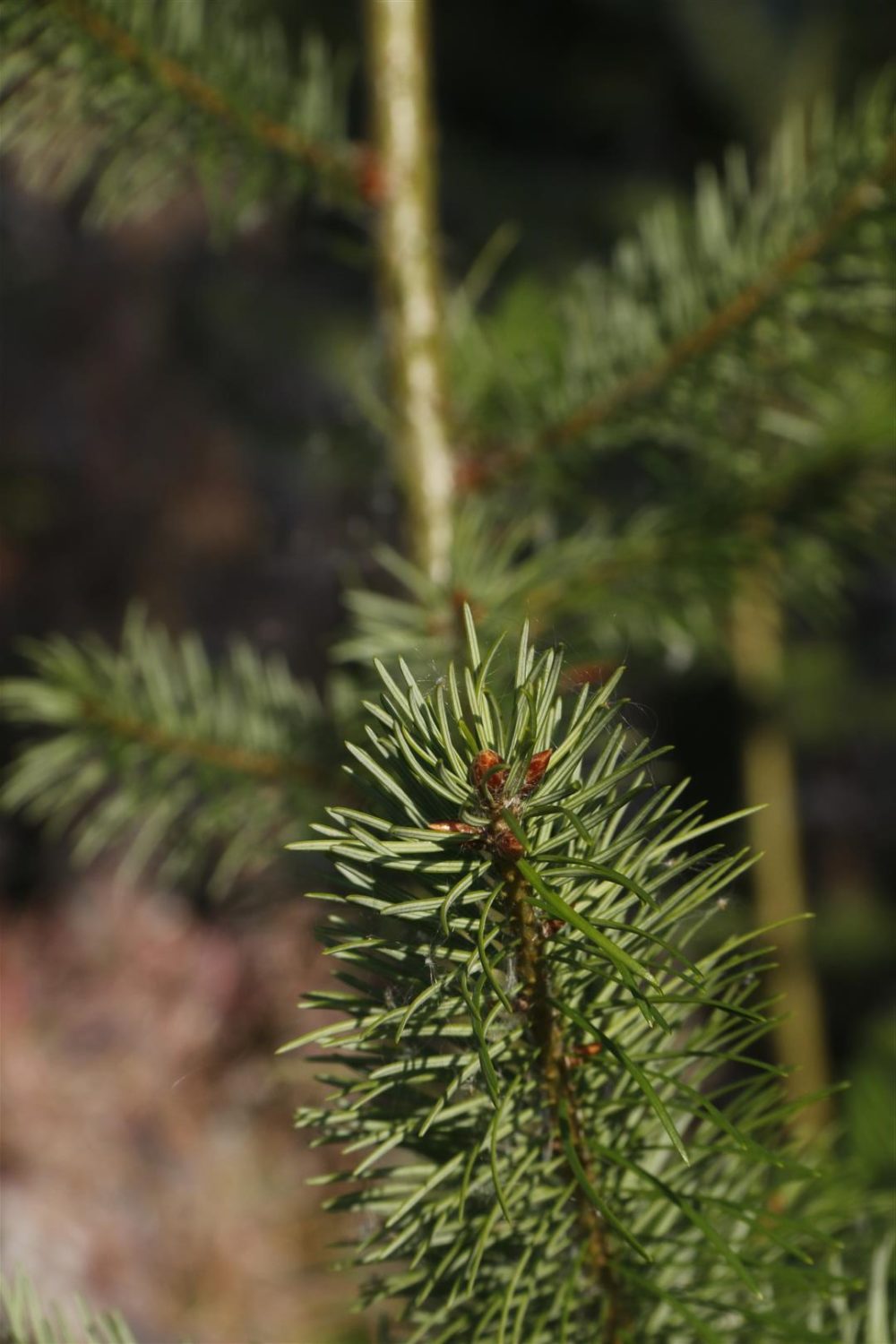Quality Throughout: Species Choice by Assistant Forest Manager Rob Coltman
Douglas fir (Pseudotsuga menziesii) is a conifer species from the Pacific north-west of North America. The species was introduced to the UK in 1827 by renowned Scottish botanist David Douglas – for whom the species is named. Interestingly, the menziesii was named for Archibald Menzies, a physician and rival naturalist of Mr Douglas.
The species can grow to over 50m and can live for over a thousand years. High yield in suitable sites led to interest from UK foresters following its introduction. Planting was widespread until the 1950’s when Sitka spruce (Picea sitchensis) began to dominate as the most important commercial species. Despite the continuing dominance of Sitka spruce, Douglas fir remains a popular species with foresters – even if it forms only 3% of our forest resource in the UK, against Sitka’s 50%.
The popularity of Sitka spruce is justified with growth rates incomparable with other tree species on exposed sites with poor soils. However, Douglas fir can also perform exceptionally in suitable conditions. Douglas fir prefers a sheltered site with deep, slightly acidic sandy-loam soils – though the species has been observed growing well in soils known to have a pan, and even in soils on top of chalk!
Douglas fir can withstand low winter temperatures, though like many species can be sensitive to late and early frosts. The species can cope with periods of summer drought, with some suggesting it could perform well under the changing climate. A clone, ‘La Luzette’ has been developed in France, produced as a tree resilient to a warmer and climate, available for foresters with an eye to the future.
Douglas fir grows rapidly following planting, quickly shading out weeds on fertile sites. Regular thinning of stands is essential to create a quality product free of deformities. Research shows that longer rotations can produce timber with higher strength and stiffness – and larger diameter trees are currently fetching high prices at the mill.
The tree’s heartwood produces an attractive pink tinged timber that is durable and has a range of uses from cladding to furniture. The species has biodiversity benefits for goldcrests, coal tits, finches and small mammals (including red squirrels) who eat the seeds and for larger birds of prey who nest in tall specimens.
The species is relatively resistant to Heterobasidion, but can suffer from Swiss needle cast and Phytophthora ramorum – though not as heavily as larch. In many areas of the UK, pine and larch are growing in suitable Douglas fir sites. With the impact of P. ramorum on larch and red-band needle blight (Dothistroma) in pine species, Douglas fir represents an excellent option going forward.
Here’s to nearly 200 years of Douglas fir history in the UK. With any luck, Douglas fir’s quality as a forestry and timber species – and resilience to changing and challenging conditions in UK forestry – will take it safely and productively beyond this 21st century.



